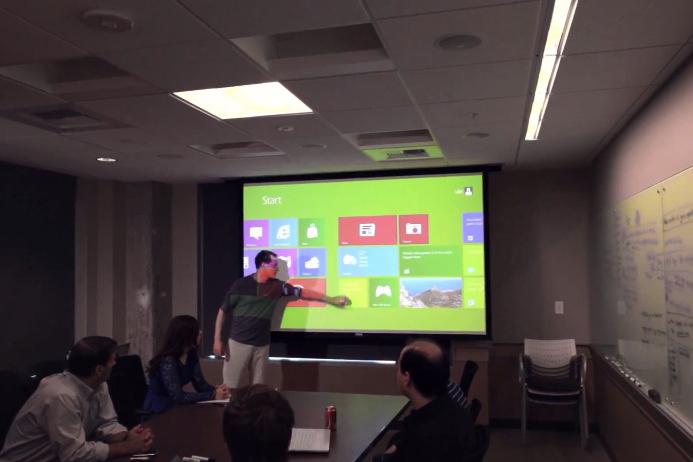
Ubi Interactive, in partnership with Microsoft, has launched a new app for the Kinect sensor that can turn any image projected onto a surface into a giant touchscreen. The software has the Kinect and a projector working together to create a touchscreen display on a projection screen or the wall itself.
The biggest benefit for this type of technology is cost effectiveness. Anup Chathoth, co-founder and CEO of Ubi Interactive, says that the app gets rid of the need for an expensive large touchscreen, and instead takes advantage of resources already available to create a touchscreen on the wall itself.
So how does the system work exactly? A projector projects an image onto a wall or projection screen. The Kinect sensor is then placed further out in front of the projector closer to the screen, but still out of the way. Both devices are plugged into a Windows computer, and from there, the software automatically calibrates everything so that the user can get started as soon as possible.
The Kinect integrates seamlessly with Windows, so users are able to click on icons and perform other tasks just like if they were using a real touch-based Windows 8 machine. The Kinect also utilizes 3D mapping, which means it can tell when users make a full click or if they’re just hovering their hands over the screen or pointing to something on the screen.
The app is being initially aimed at businesses for the time being, and the basic edition will cost $150, which will support up to a 45-inch screen, but only supports one touch point at a time. However, more expensive versions are available as well, such as the business version, which supports a 100-inch screen size and two touch points at once, priced at $800. An enterprise edition is also available for $1,500 that supports up to 20 touch points at once.
Since most businesses already have a projector, the Kinect system can be easily implemented into existing setups, with companies only having to buy the Kinect for Windows sensor, as well as the software license. A Kinect for Windows sensor costs $250.
Editors' Recommendations
- The best touchscreen laptops for 2022
- The Surface Pro X can finally run all Windows apps
- How Microsoft plans to solve the Surface Neo and Surface Duo’s app problem
- The Surface Book 3 might have room for a touchscreen in the keyboard deck
- Turn any smartphone into a touchscreen laptop with this new plug-in device

